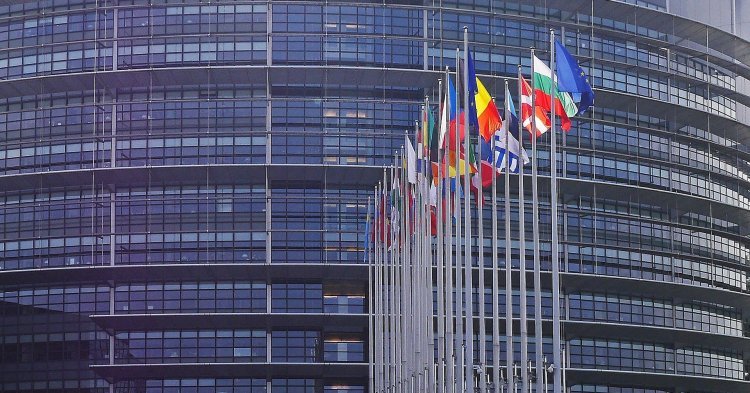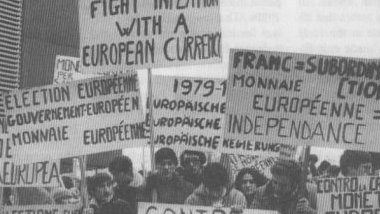Yesterday, the need for European federations
In 2018, within the European Union, three of its members are federations (Austria, Belgium, Germany) while the political systems of another three are characterised by devolution to subnational governments (Italy, Spain, United Kingdom); the remainder are either unitary states or federacies that have granted their overseas territories an advanced degree of autonomy (Denmark, Finland, France and the Netherlands). Since the end of World War II, the high degree of self-governance afforded to regions within the aforementioned federations and devolved states has proven effective in avoiding violent conflicts between regions. This contrasts with most of Europe’s history, throughout which interregional conflict was the rule, not the exception.
Indeed, after the Thirty Years War, the Scottish Jacobite Uprising, the Seven Weeks’ War, and the Spanish Civil War, many Western European nations have experienced enough internal strife to wisen up to the merits of federalism. Though each federation is organised slightly differently, reflecting therein their historical peculiarities, the sharing of power between the central government and its regional counterparts is common to all of them. It is this division of power that has decisively contributed to keeping these countries in a political equilibrium, that has yielded unprecedented peace for over 70 years. Perhaps even more importantly, it has given space to a convergence of values, norms and attitudes within European nations over long stretches of time, thereby often bridging gaps that seemed unbridgeable a few centuries ago.
Today, the need for a federal Europe
At the European level, such space for convergence is urgently needed today as well. When 51% of Europeans feel that their voices don’t count in the EU, including relative majorities in 7 out of 11 of the EU’s most recent members, addressing this perception of disenfranchisement should become a priority. [1] To a large degree, this disappointment is likely to reflect the diversity of policy concerns within European countries. [2] Indeed, while nearly all Europeans agree that immigration and terrorism are the two most important issues facing the EU, Europeans quibble over the relative importance of health and social security issues, rising living costs, unemployment and immigration within their respective countries. This diversity of national issues, which – despite being national – are of course also affected for better or for worse by European policies, suggests that EU citizens will be unable to agree on European policy priorities beyond common policies on security and defence, migration and foreign affairs. This is particularly problematic within the Eurozone, where only some countries perceive unemployment and the local economic situation as issues of paramount importance, while others – e.g. Germany or the Netherlands – have completely different economic priorities and are likely to view countercyclical fiscal or monetary policies with a bad eye due to fears of inflation.
Against this backdrop, the consensus for further European integration will only be preserved if the European Union focuses on acquiring the political competencies needed to address those challenges which can and must be met at the European level. These include unambiguously – but need not be limited to – a common security policy, a common foreign policy and a common migration system, all of which must be effectively enforced in order to safeguard the freedom most dear to Europeans in nearly all Member States, namely the freedom to travel, study and work anywhere in the EU. In all remaining policy areas, the European Union should carefully assess whether or not to return competencies to its constituent Member States or their subnational regions. This would in turn not only give back their governments the policy space required to pursue the different policy priorities of their citizens, but also thereby strengthen these governments’ accountability towards their local citizens, robbing them of one of their preferred electoral strategies: the infamous “shift-the-blame-to-Brussels”.
The aforementioned focus on security, foreign policy and migration could be implemented by a core subset of the current European Commission (e.g. a further empowered foreign minister and a defence minister). This core subset of the Commission should then be centred around either a President elected by popular vote or a Prime Minister elected by the European Parliament. The Member States would retain strong control over European policy through their re-incorporation in a new institution akin to e.g. the German Bundesrat or the U.S. American Senate, making the Union truly federal.
Towards a truly pan-European federalism
Unfortunately, in spite of their political denomination, many European federalists seem strangely uncomfortable with this minimalist approach, even though it appears like one of Europe’s best chances to lay the foundations for a federation. Much like in the United States of America, the future of such a minimalist federation would not be traced beforehand, i.e. Europe’s central government, pressured by its citizens, might choose to devolve further competencies to its national or regional levels or, conversely, national governments may agree to jointly confer policy making powers to the European level in areas where intergovernmental coordination and cooperation could be expected to be ineffective. By contrast, despite calling themselves “European federalists”, many Euro-Federalists would be hard-pressed to admit any policy area that would prosper better at the national level than at the European.
Consequently, their vision of a united Europe can hardly be called federal. Instead, it should be made out for what it is: centralist and unitary. Typically, fixated on the power of a central European government (no pun intended) and with deep roots in Brussels, this unitarian vision of European integration has a hard time to keep up pan-European pretences. The recent dissent seen within certain organisations within the movement for a federal Europe bears witness to that claim. However, by failing to pay heed to the diversity of Europe’s economies, societies and cultures, the centralist approach of certain “Euro-Federalists” threatens to suffocate the current potential of European federalism. And to achieve what? To force a convergence of standards of living, values, and attitudes that is likely to occur naturally in the long-run if national governments are given sufficient policy space and anti-European sentiment isn’t nurtured without need by forcing a uniform template upon a diverse people.
The best chance for a European federation thus is, unsurprisingly, neither to be found in European centralism nor in central Europe; it is and remains in a truly pan-European federalism.





Follow the comments: |
|
